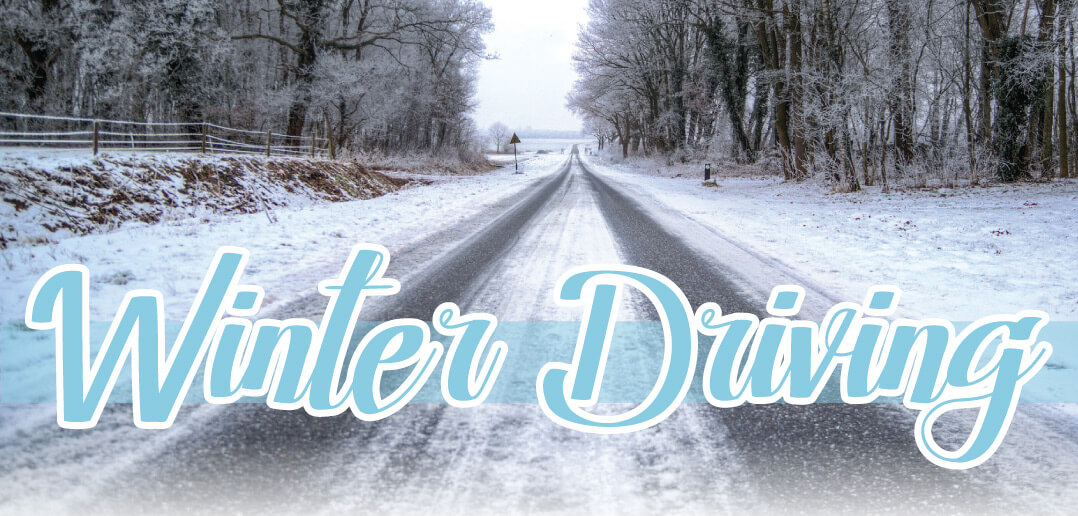Winter Driving in Omaha, NE 2017
Brace yourselves, winter is coming. (Sorry Game of Thrones fans, the actual season we have to experience here in Nebraska. You’ll still have to wait what seems like an eternity for the final season of the show.) While we fared quite well last year with mild temperatures for the most part and only a few incidences of poor driving conditions related to inclement weather, that is not anticipated to be the case this time around as we approach yet another formidable Nebraska winter. Be that as it may, we’re not strangers to it and fully appreciate the fact that it’s always wise to be prepared. To that end, the local professionals in the automotive industry are more than ready, willing, and able to help.

Boyd Dingman – Dingman’s Collision Center
We consulted with Boyd Dingman with Dingman’s Collision Center, who offered some important things to keep in mind as we approach the inevitable.
“It would be nice to be able to call in every time we had a little bit of snow but that just isn’t realistic. We have to get out there and brave the snow and ice in the winter months.
A few things to check before you begin your winter driving:
Wiper Blades – Are they working properly? If you question this at all, think about if your wipers will clear the dirty slush that continually flies onto your windshield, without leaving a smeary mess. If not, they need to be replaced. Keep in mind that it is recommended to replace wiper blades annually. Always having enough windshield wiper fluid is important particularly one that is made to withstand freezing temperatures.
Battery – If your battery is more than three years old, it is a good idea to have a certified battery shop or mechanic shop test the battery. You do not want to be stranded due to battery issues that could have been avoided.
Tires – Check your tire pressure and tread. Your tire pressure may have dropped along with the temperatures. For every ten degrees, the temperature drops tires average a loss of one pound per square inch. Monitor your tires frequently throughout the winter and make sure to maintain proper tire pressure. Your tires should also have adequate tread, so having them checked out by a professional is a good idea. Another good option is investing in snow tires. Always have a spare tire and jack with you as well.
Belts & Hoses – Check them out or have a professional check them to make sure there are no leaks or bulges and no fraying. The cold weather will only exacerbate these issues making the hoses and belts more brittle.
Radiator – Make sure that your radiator is filled with the proper water/anti-freeze mixture that is recommended by your vehicle manufacturer.
Gas Tank – Always keep a quarter to a half gallon of gas in the tank at all times to prevent moisture buildup in the tank.
Many vehicles have technology that is supposed to help with the slipping and sliding but it is no guarantee, and in some cases, it provides a false sense of security. The important thing is to take things slow and to watch for black ice and other areas that have historically been trouble.
Furthermore, be prepared and have a winter weather kit in your vehicle just in case. When putting one together, some items to include are a blanket, boots and gloves, an extra set of warm clothes, food and water, ice scraper, small shovel, flashlight, windshield washer fluid, flares, jumper cables, first aid kit and an abrasive material to help if you get stuck such as sand or kitty litter.
When venturing out, take it slow and be prepared for road conditions to change rapidly.”
Unfortunately, even for the safest of drivers who have taken all of the appropriate precautions, accidents still happen. In terms of insurance coverage, it’s a good idea to consult with a professional to evaluate your current policy and update it if needed. The most commonly overlooked coverage is uninsured and underinsured motorist coverage. This is coverage for the insured in case he/she is to get hurt and the at-fault party either does not carry insurance at all or has inadequate coverage for the injury that you have incurred.
Many people think of price when buying insurance. It is drilled into our heads every 15 minutes on television and radio. Save money on your car insurance. This leads to many people buying coverage at the state minimums, which is 25,000 per person and 50,000 per accident liability coverage. What many don’t know is that with this amount of coverage, they also only get 25,000/50,000 uninsured motorist as well as underinsured motorist. Long story short, if you were to have these coverages and were to get hit and injured by an uninsured motorist, the maximum benefit you would receive is 25,000 dollars. This many times will not pay for the trip to the emergency room alone. Yes, going with higher limits will be a bit more expensive, but it is your best interest to have the highest liability limits and uninsured motorist/underinsured motorist coverage that you can afford. Talking with an experienced agent can help you avoid these shortfalls and will present you all of the options so that you can make an informed decision for yourself and your family, rather than just getting the cheapest insurance you can find online.
Taking the necessary precautions is essential to your safety on the roads when winter weather strikes. Be sure to take this advice into consideration and be safe out there everyone!

